My father moved to Athens, Greece, in February 1951. He had just returned to USA from an overseas position in the Pacific. After about two weeks job-hunting in New York City, a water resources engineering company offered him this Greek posting. He visited relatives in Boston and Orlando, bought a few supplies, boarded Pan Am, and left for Greece. He traveled light and efficiently (unlike his son, who tends to be burdened with too many cameras).
Greece, with its ancient origins, may have seemed exotic. But he had studied classical literature, and Greek architectural features were popular in early 20th century American construction. He and other American engineers lived in hotels for a few months and then found apartments. He co-rented a flat near Kolonaki Square with two other Americans within easy walking distance to the office. The flat came with a man-servant who cooked and shopped. On weekends, he attended architecture lectures and had time to explore. He sometimes had access to the company car and by mid-year bought a new Chevrolet.
Here are some examples of his Kodachrome slides from 1951 and 1952. My dad did not label his slides, but he wrote a diary. Based on it, I know the exact date for some slides, but others are guesses. At that time, Kodak did not print the processing date on the slide mount. He used his 1949 Leica IIIC camera with its 5cm ƒ/2 Summitar lens (which some of you 35MMC readers may recall I still use).
Athens
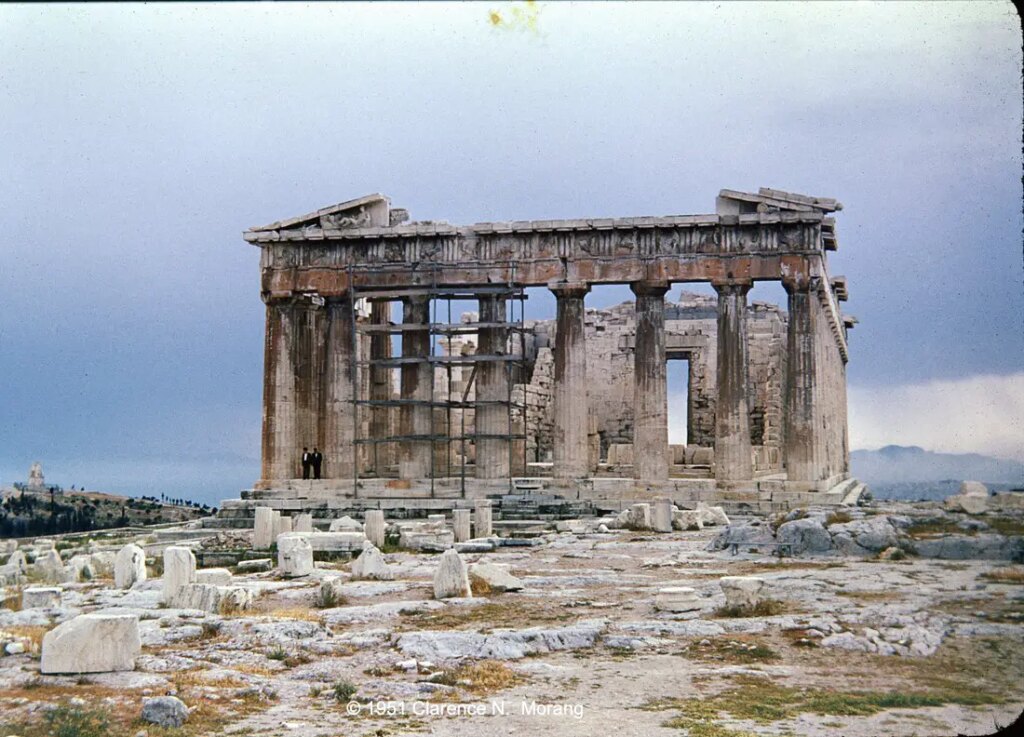
The magnificent Parthenon is under perpetual preservation and reconstruction. It is amazing to think that Aristotle himself must have visited this temple and walked among the columns. And consider modern famous visitors, such as Lord Byron, Winston Churchill, Harry Truman, Dwight Eisenhower, Princess Elizabeth, Elizabeth Taylor, etc.
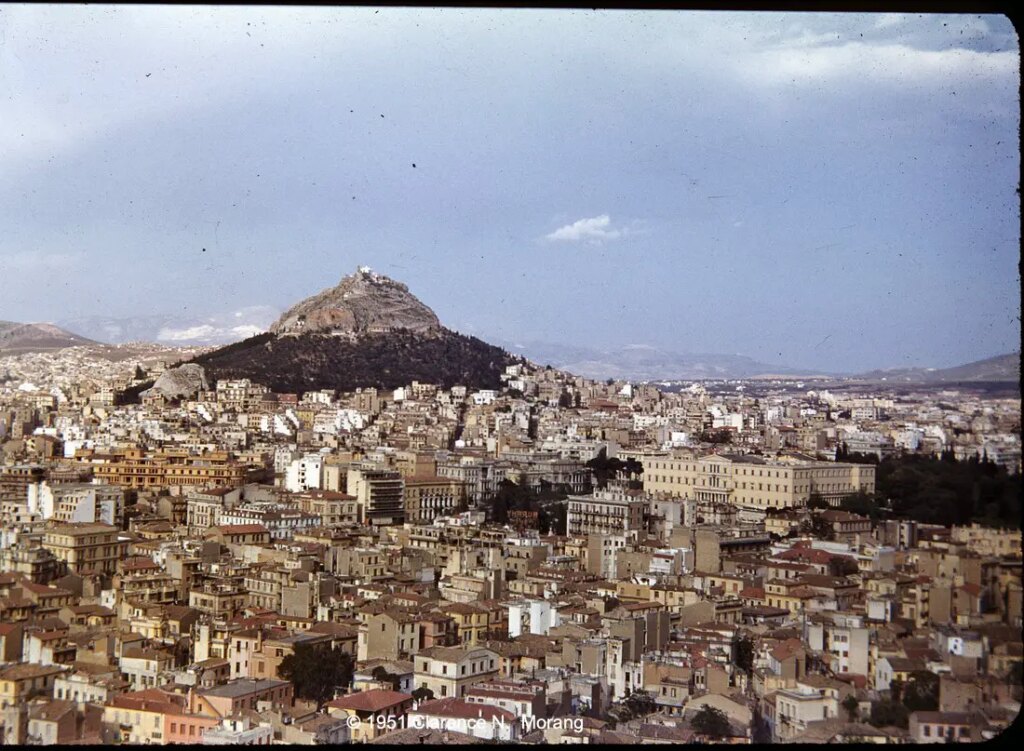
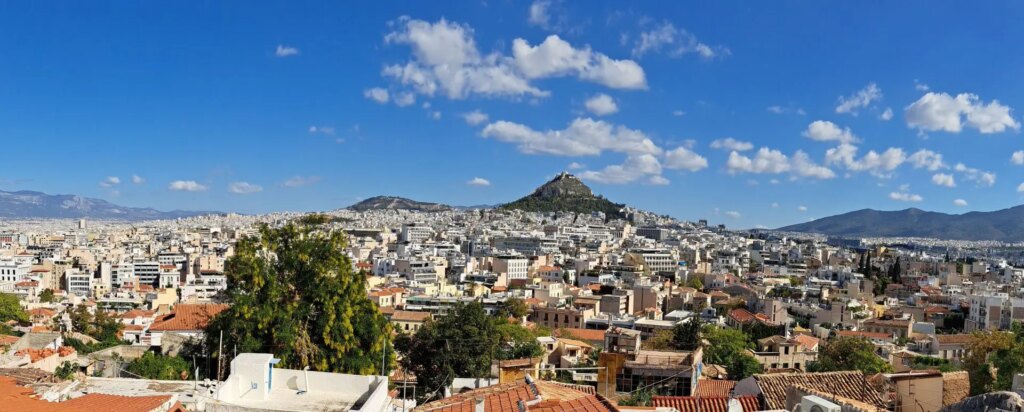
In 1951, Athens was still a compact city with an elegant urban core and late-1800s buildings. The tan building in the center right is the old royal palace that was used as the Parliament. During the post-war boom of the 1960s and 1970s, developers tore down many (or most) of the traditional masonry buildings and replaced them with ugly, nondescript concrete boxes. At least Athens imposed height restrictions, and avoided the worst of 20th century glass towers.
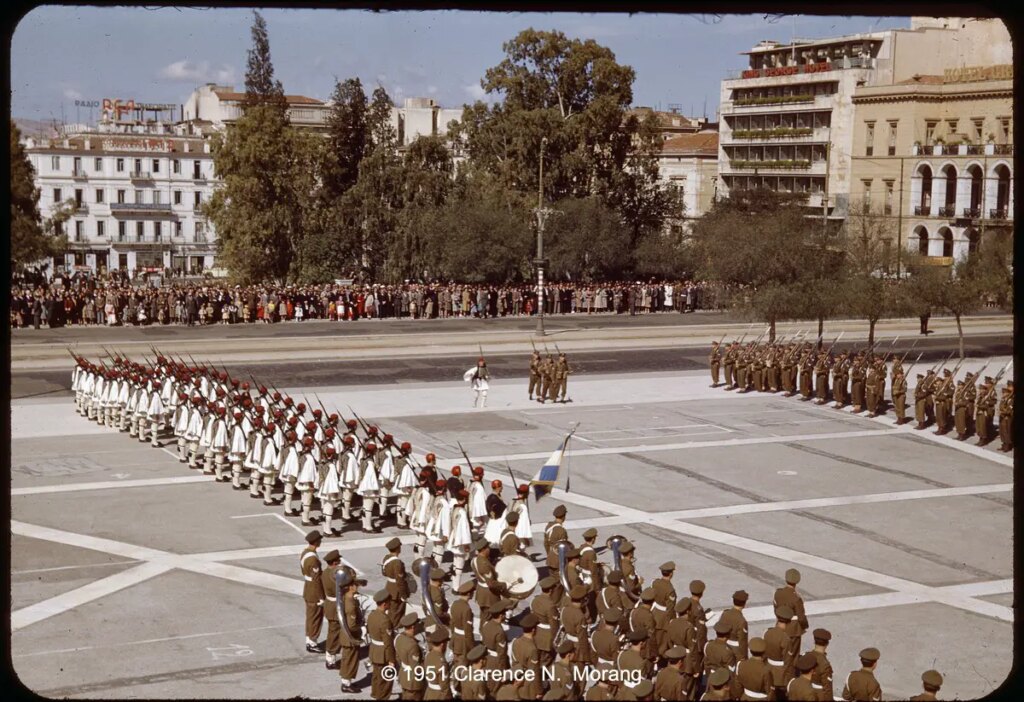
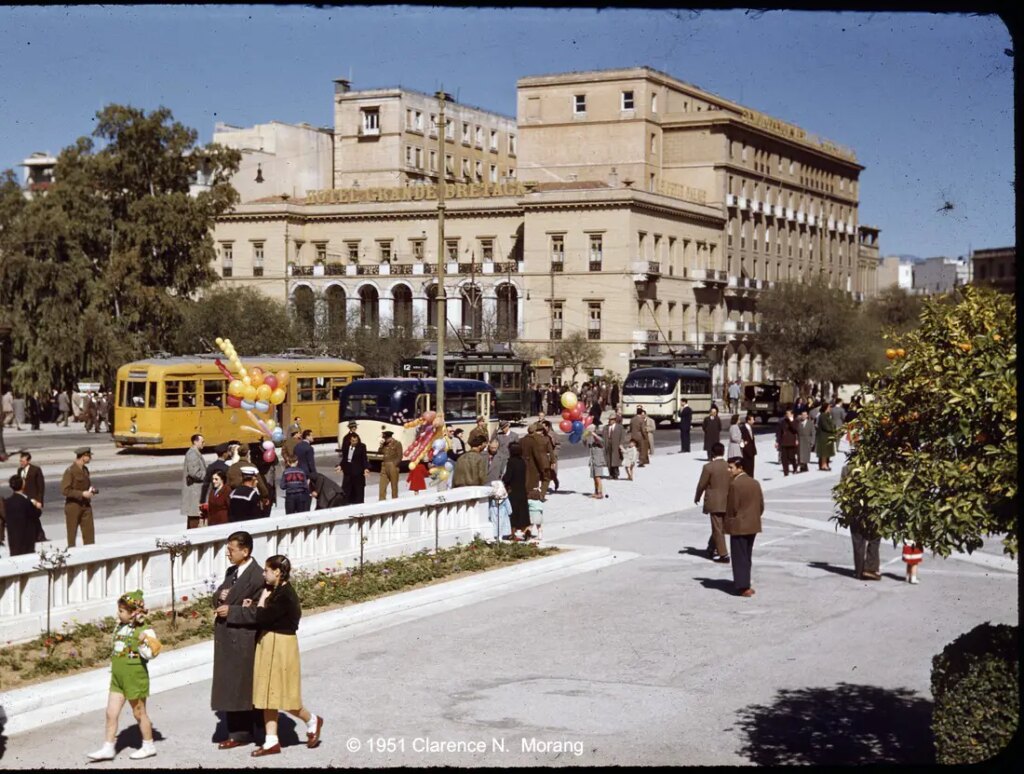
Syntagma is still the central square of Athens and a central meeting point for tourists and businesspeople. In the 1950s and 1960s, airline offices and bookstores lined the square. And I remember an American Express office, where you could pick up letters, buy travel tickets, and pick up money that had been wired to you.
The handsome building in the distance is the luxurious Hotel Grande Bretagne. In the late-1800s and early 20th century, wealthy Britons on their European grand tour stayed there. During World War II, the hotel housed the German general staff and occupation government. After the war, British and Americans organizations moved in. On Christmas Day of 1944, Winston Churchill was almost blown up by a bomb placed in the sewers. During the Greek Civil War, the hotel housed refugees.
My dad stayed in the Grande Bretagne for a few weeks, but the room charge was high and he was unimpressed by the cuisine. He moved to a cheaper hotel, where he was also unimpressed by the cuisine.
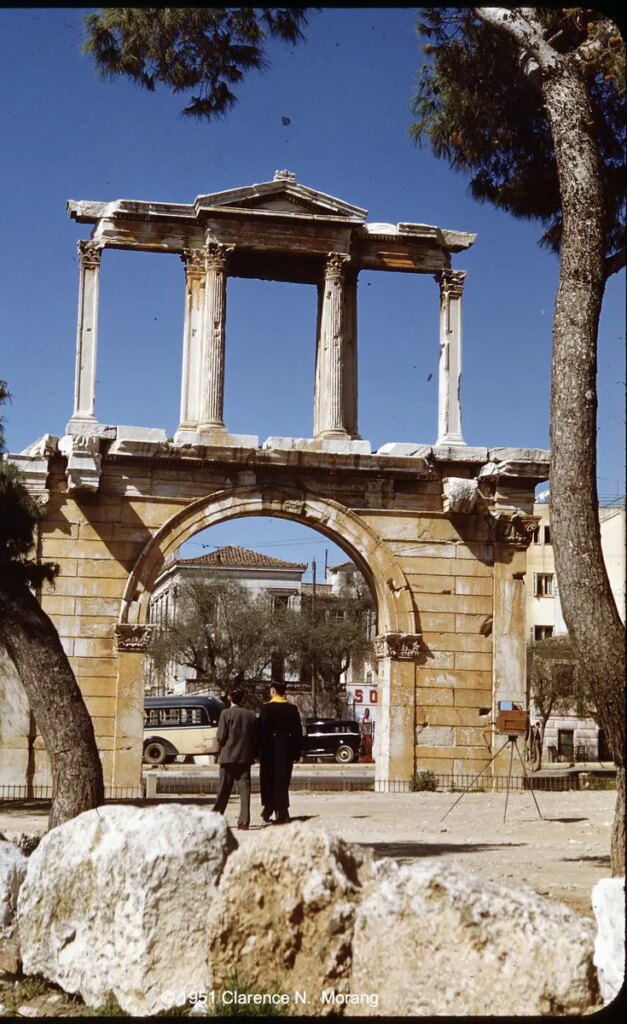
In those days, it was a challenge to get the rolls of Kodachrome processed. In that era, Kodak included processing with the purchase of the film. I remember my dad telling me that he would give an exposed roll to an American who was returning to USA. The colleague would send the film to Kodak when he was back in USA. Then he would take the slides back to Greece or give the package to another American heading to Athens. He would also deliver fresh rolls of film. Turnaround must have been months. This would certainly not suit the modern Instagram generation. Greece is dry, which helped preserve these slides and retard growth of fungus.
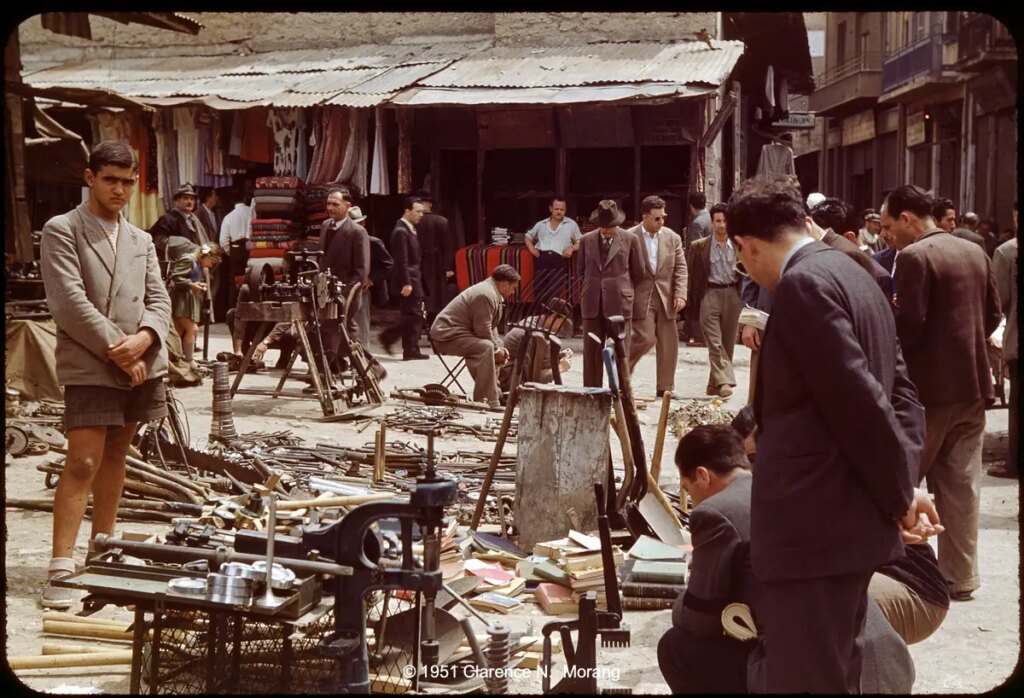
In the 1950s, sellers of old metal, household goods, books and hardware occupied the Athens Flea Market. Today, it is a popular tourist destination, but the stores largely sell clothing and goods made in China. Some years ago, I bought a selection of Maria Callas CDs there. Maria Callas was the famous and temperamental Greek soprano who lived a tumultuous life.
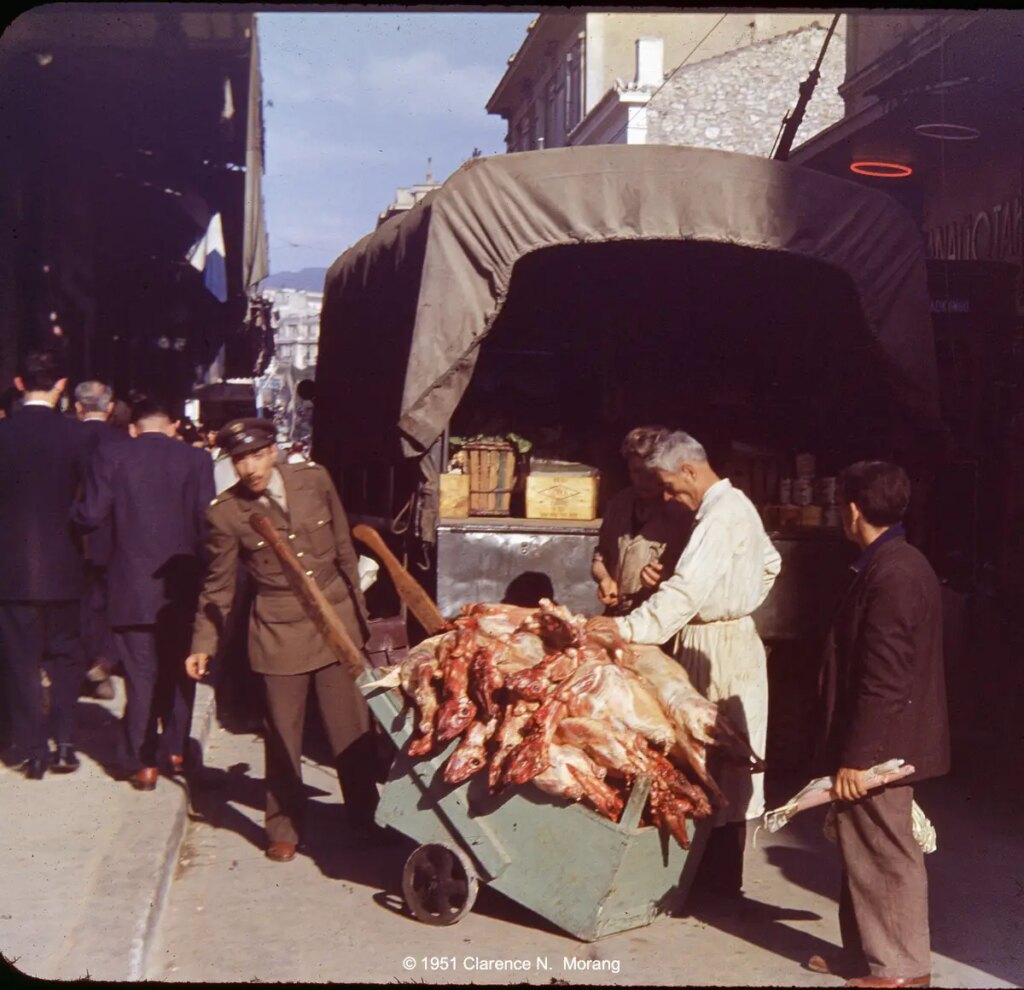
The Central Market on Athenas Street is an active market for fish, meats, and spices and is also a popular tourist destination. Each trip to Greece, I make a point to visit the market and eat a meal at once of the restaurants (and drink some Retsina). Before Greece entered the EU, the market was somewhat earthy, but it is now much more sanitary.
Family
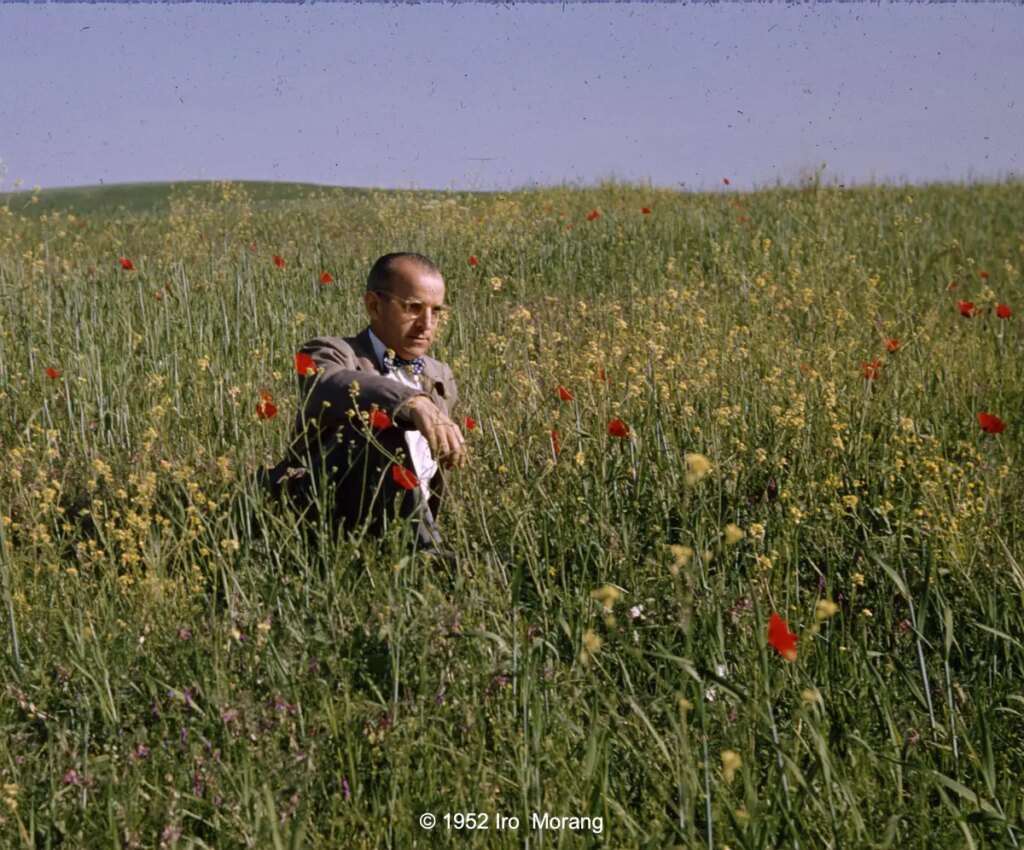
Remember when Americans dressed properly? I do, but it was a long time ago.
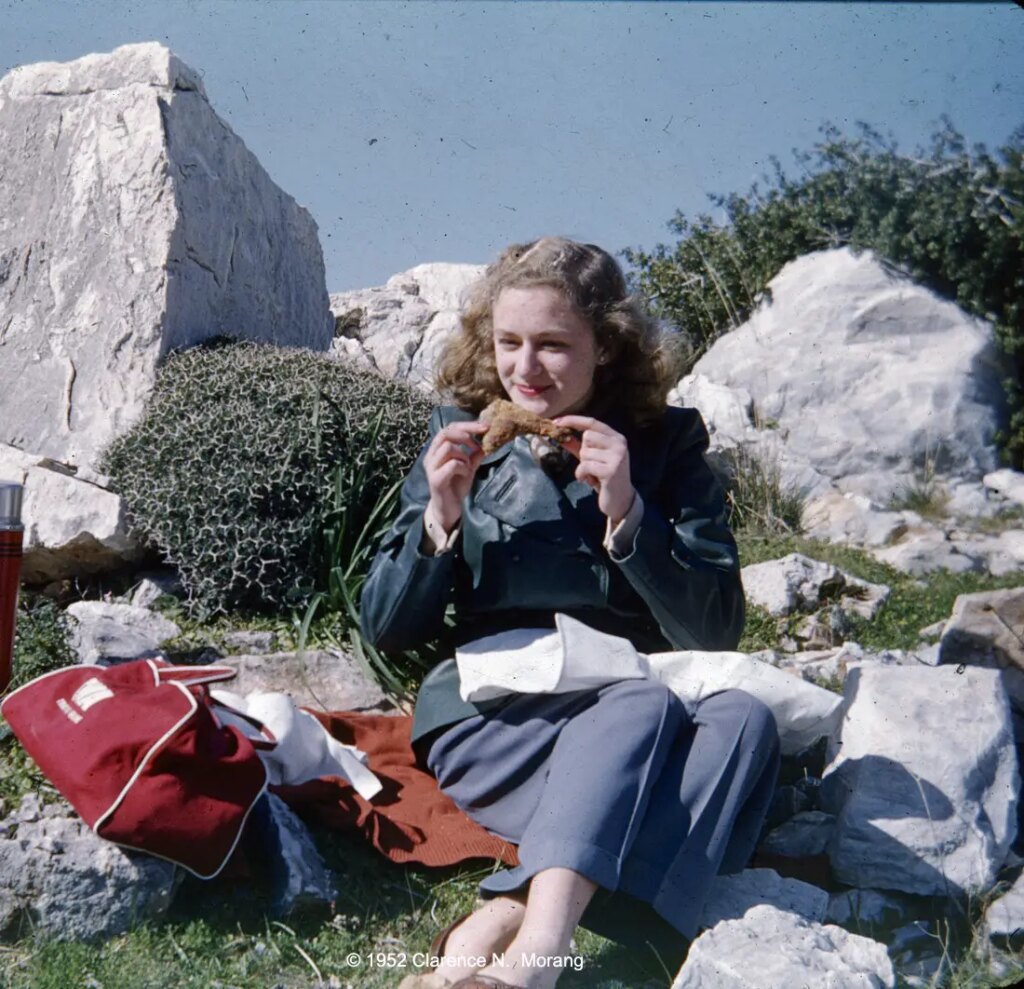
Closing thoughts
Reviewing these family photographs and reading my father’s diary took me back to a different time, a journey into the world of my youth. I am glad we saved these photographs and documents. Thank you for accompanying me on this journey.
Consider: these Kodachrome slides are over 70 years old. Yet they hold an amazing amount of image data. They are a time machine into the past. And the data is accessible! All you need to do is look at them via a magnifier or project them if you have a slide projector. And as long as they are not destroyed in flood, fire, or fungus, they will be accessible for years to come. Some sort of imaging device, like a camera with a macro lens, will be able to copy this data. Will our digital files or “cloud” files be accessible in seven decades? Will we look at a billion Instagram mobile phone dumps in 70 years?
Share this post:
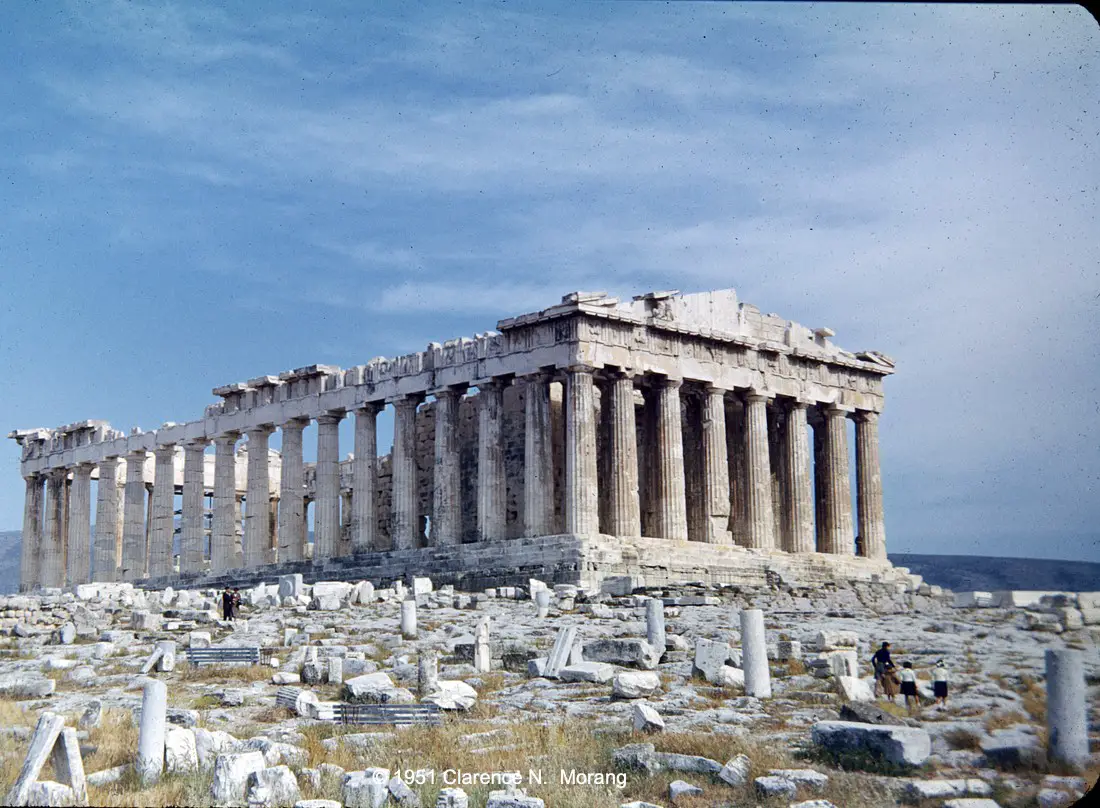








Comments
JDW in Melbourne on From the Archives: Kodachromes from Athens, Greece, 1951
Comment posted: 12/04/2023
I was too young to have been photographing in the 1950s, but I got into photography in 1961, and from the mid-'60s I shot a lot of Kodak slide films, usually whatever I could get my hands on at the cheapest price for a high school student with only a part time job and occasional sale of B&W prints to local buyers, mostly home portraits.
Sadly, my Ektachromes and Anscochromes (remember Ansco slide film?) have now mostly faded, but my Kodachromes still survive, almost as good as they were when I got them back, posted to me in New Brunswick from Canadian Kodak's processing lab in Ontario.
I had a (borrowed from an uncle) Kodak Retina, I've forgotten the make number but I really it had a 2.8 lens, and I used it to do a fair bit of color work for customers. Now and then they wanted slides and usually I gave them the originals (not a great idea) for their own use in getting prints made. This was small-town photography and the market was whatever the locals could pay for my work.
After 60 years, I still have a few hundred slides of family members. My grandmother in her flower garden in my grandparents' country farm house, circa 1963. Documentary images of my home town in New Brunswick (Canada, not New Jersey) mid-'60s. Ditto work images of a lobster festival being held (and still going strong) in my home town in the summer months. Occasional family portraits. My grandfather and cousins doing the haying in August. Maple syrup and candy being made by boiling down the sap from the maple trees in early spring. The one and only photo of my grandpa's sugar shack, sadly lost to a rogue forest fire in the '80s. Ditto the family farm house, bulldozed in 1982 by an evil niece who bought it for a song when our elders retired, she had it bulldozed to build a forgettable modern cottage, breaking a promise to keep it as it had been built in the 1880s - she later got into financial difficulties and had to sell, to someone who promptly bulldozed it in turn and built a motel on the site.
Not many others in my family bothered with family photos beyond the usual birthdays and Christmases, so my slides are likely the only surviving documentary images of our family life as it was then.
I now live in Australia and there isn't anybody close to me who would want these images. I plan to write to the provincial museum in my (old) home province in Canada, to offer them the slides for their archives if they want them, along with proper captions and a diary of my reminiscences from the period.
This may be an old man's time-filling project, but I'm enjoying the notion of getting it off and running.
So yes, all this to say, slides are so evocative, and Kodachromes are by far the best ever. It was a sad day when Kodak discontinued the process. Will our archived digital images last as long? The jury is definitely out on this one... we can only live in hope.
A most excellent effort, Kodachrome guy. The photos of your parents made me feel as if I was there with them, partaking of the picnic. The power of good slide imagery, yes...
Oh, by the way - if your archival-historical web site still online? I used to look at it quite regularly a few years back, but time passed, my then laptop rendered up its spirit and somehow I never got back into it. Please post if it's allowed, I for one will follow it up!
DANN
Comment posted: 12/04/2023